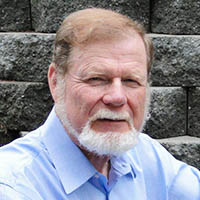By Paul J. Nahin
The Big Bang of Numbers: How to Build the Universe Using Only Math. By Manil Suri. W.W. Norton & Company, New York, NY, September 2022. 384 pages, $32.50.
The Big Bang of Numbers: How to Build the Universe Using Only Math. By Manil Suri. Courtesy of W.W. Norton & Company.
Manil Suri, author of
The Big Bang of Numbers and a professor of mathematics, is also a published novelist. It is therefore no surprise that he is an excellent writer of prose. To be quick to the point, he has produced a coherent book on—in his words—many of the
ideas of mathematics. That being said, when readers finish Suri’s latest book, their ability to
calculate anything will not be any more developed than before. Realizing this, I could not help but think of Lord Kelvin’s famous assertion that, to paraphrase, “we can talk all day about things in general, but until we can
calculate stuff we really don’t know anything” (he actually used the word
measure, but I think the meaning is the same). In fact, geometry—the most ancient branch of mathematics—takes its very name from this idea (to
measure the Earth).
To be fair, Suri is not unaware of this concept. In the opening paragraphs, he specifically mentions that The Big Bang of Numbers is a reaction to the usual image of mathematics — as simply a tool with which to calculate. Since he then turns away from the notion of calculation, one really can’t fault what follows. But to somebody like me, who thinks of mathematics as beautiful precisely because it gives us the power to calculate rather than merely pontificate, the text loses some of its allure.
Now, don’t take what I’ve just written the wrong way. Suri tells readers right up front that his goal is to present many of the ideas of math to the general masses in an understandable manner, and he mostly succeeds. The book would be a great read for bright youngsters who might otherwise spend too much time on non-academic activities. For readers of SIAM publications, however, there is less about which to be enthusiastic. This tome will surely stimulate some thought in intelligent high school students, but for the SIAM community it is mostly eye candy. Tasty, yes, and briefly fun to “eat,” but consumers will ultimately yearn for substance.
I write this with a sense of regret because I believe that Suri possesses the skills to have had it both ways. In the introduction, for example, he repeats the words of Rob Fixmer, a former editor at The New York Times who asserted that “Mathematics has no emotional impact [compared to physics] … Math doesn’t challenge any fundamental beliefs or what it means to be human.” Suri doesn’t think much of this sentiment (and I bet many SIAM people don’t either), but it struck me that such a silly statement provides the opening for an obvious (alas, missed) rebuttal with some discussion of probability — the beautiful branch of math born through the analysis of games of chance.
I am no cultural anthropologist, but I believe that the only creatures on Earth—both past and present—that have ever gambled are humans. Gambling is a unique attribute of being human, and there is a lot of emotion in high-stakes betting. The screaming crowds at the local racetrack and the nationwide frenzy whenever a billion-dollar lottery occurs are prime examples of this phenomenon. Probability is bursting with numerous wonderful, nonintuitive calculations that only involve arithmetic and could have thus been included in this book. Suri does offer some words on randomness, but none that will give readers the ability to calculate anything.
In addition, the selection of topics in The Big Bang of Numbers may strike some people as curious. The text spends a fair amount of space on certain special, important numbers (i.e., \(\sqrt{2}\), \(\pi\), the golden ratio, and \(i=\sqrt{-1}\)), but of the vastly important \(e\) there is only a single sentence telling us that it is “the base of the natural logarithms” — a statement that won’t mean much to anybody who isn’t already familiar with logarithms. Given that Suri mentions \(e\), \(\pi\), and \(i\), I also found it surprising that there is no reference—even in passing—to the wonderful \(e^{i\pi}+1=0\).
I could continue along this line with my grumbling, but doing so would be mean-spirited. After all, one can criticize just about any book for not covering the topics that the reviewer thinks should have been included. As H.G. Wells observed (probably after reading a critical review of one of his bestselling novels), “No passion in the world is equal to the passion to alter someone else’s draft.” So I will simply end by saying that Suri has done a good job of addressing the topics that he chose to include. For example, there are some interesting mini essays on the complex plane, dimensionality, and the concept of infinity. If you know someone whose math education ended with high school algebra but who is willing to have a second go at thinking about math (though is maybe not so interested in actually doing math), this book would likely be of interest.
 |
Paul J. Nahin is a professor emeritus of electrical engineering at the University of New Hampshire. He is the author of more than 20 books on mathematics, physics, and electrical engineering; his latest book, The Mathematical Radio, is set to publish through Princeton University Press in early 2024. |